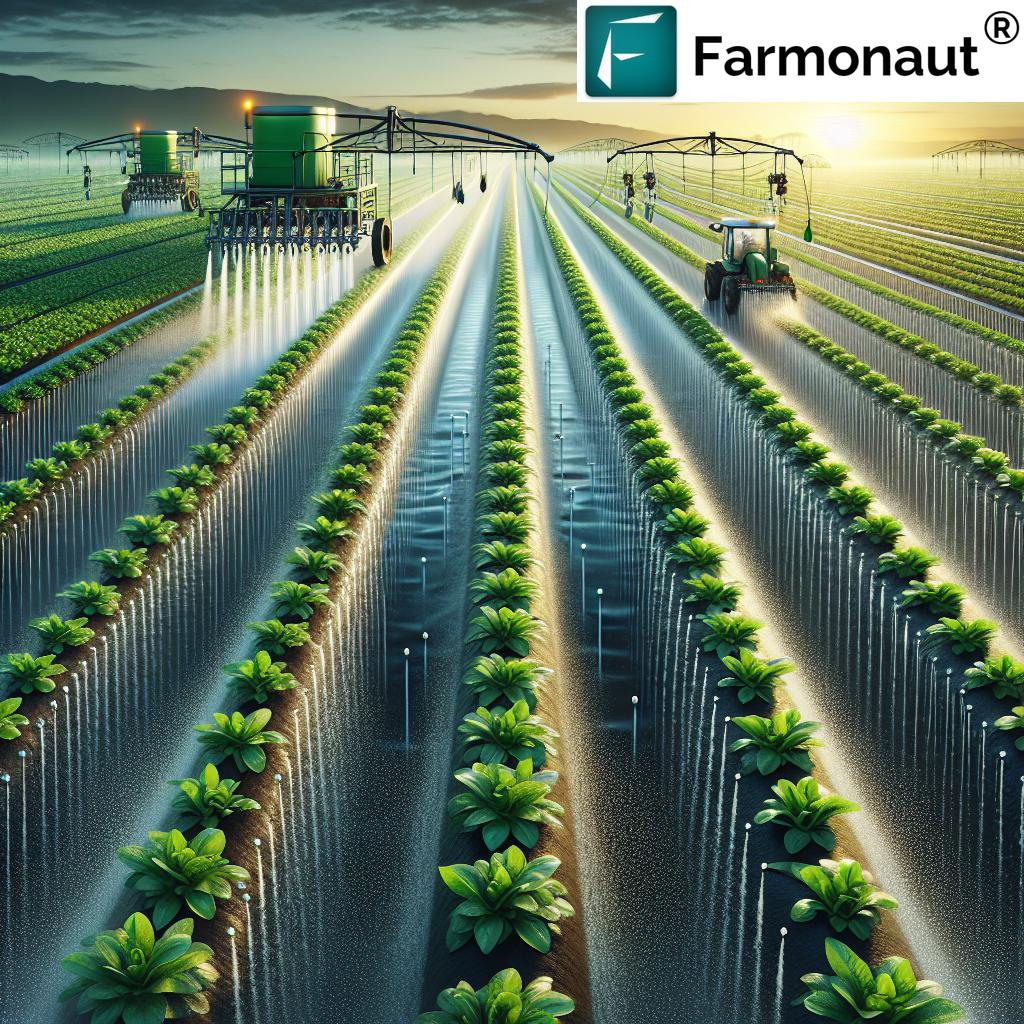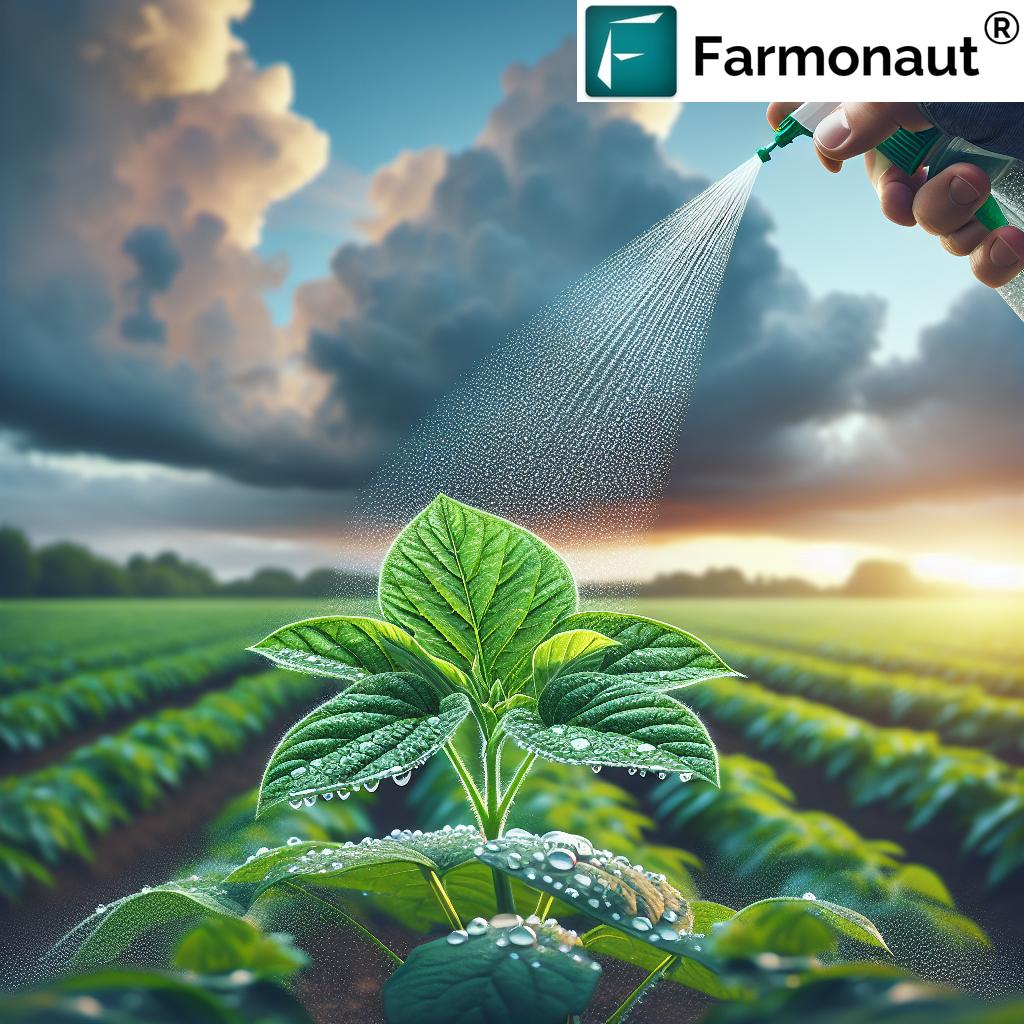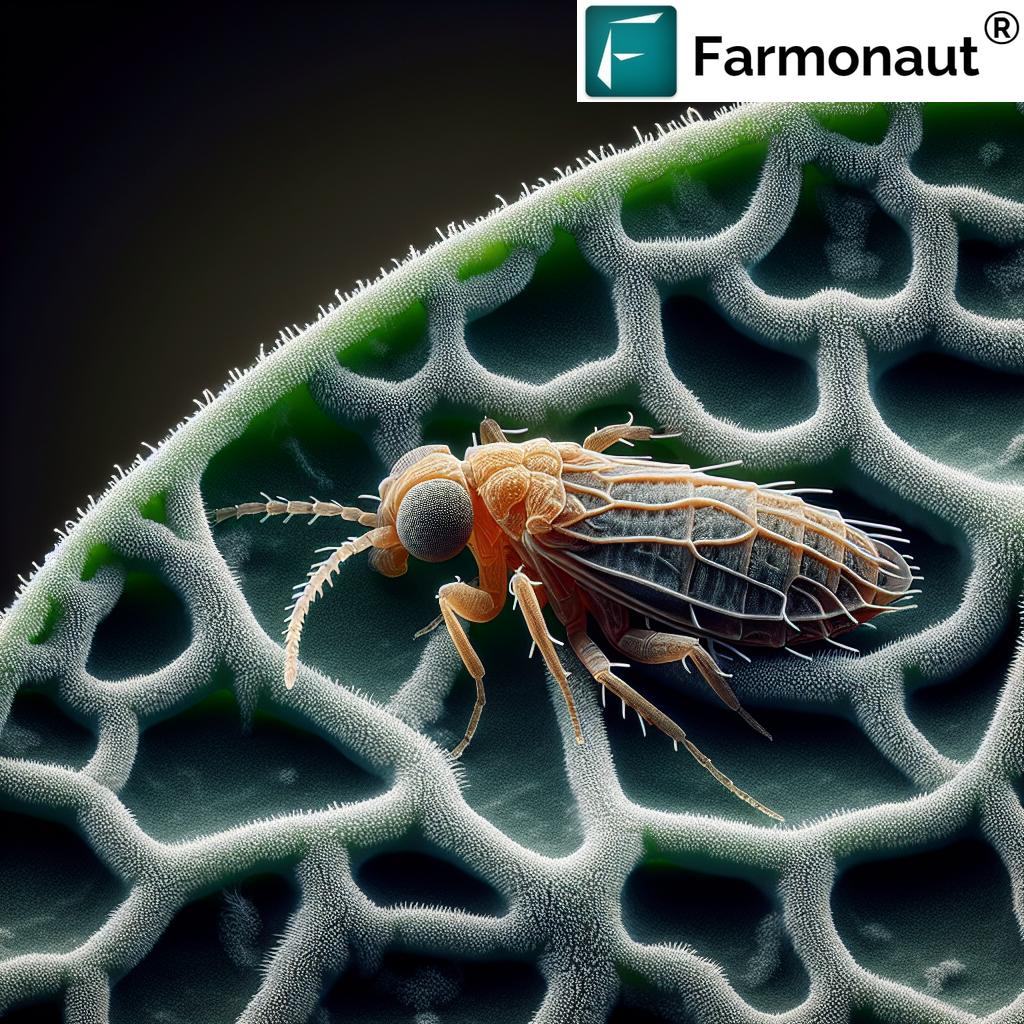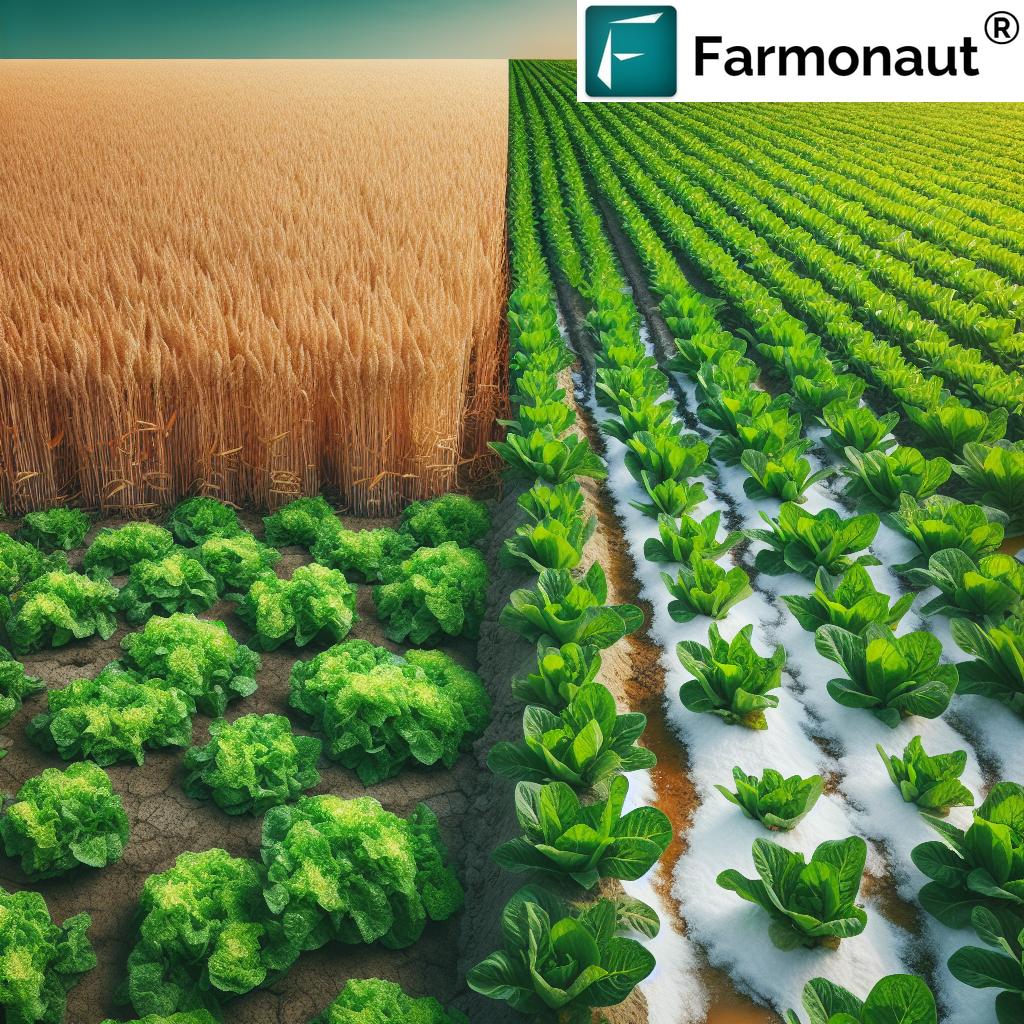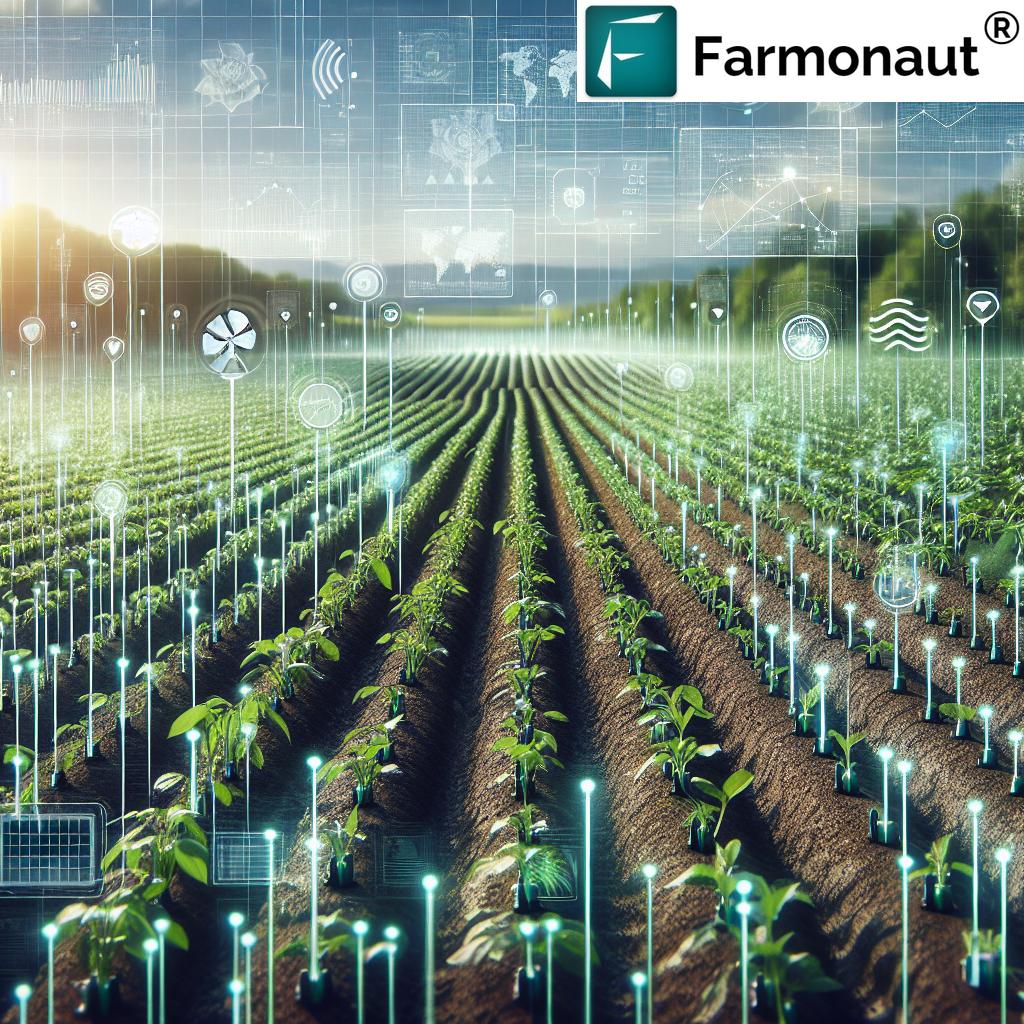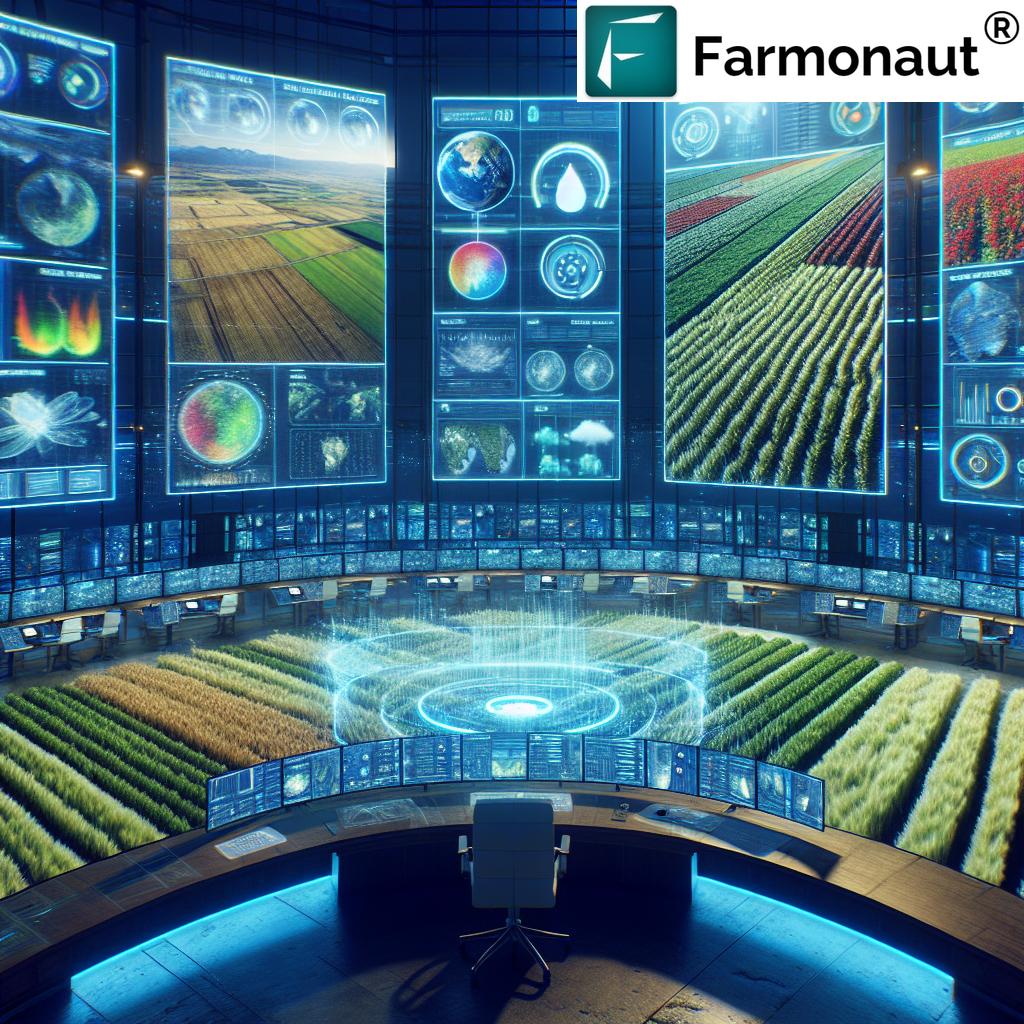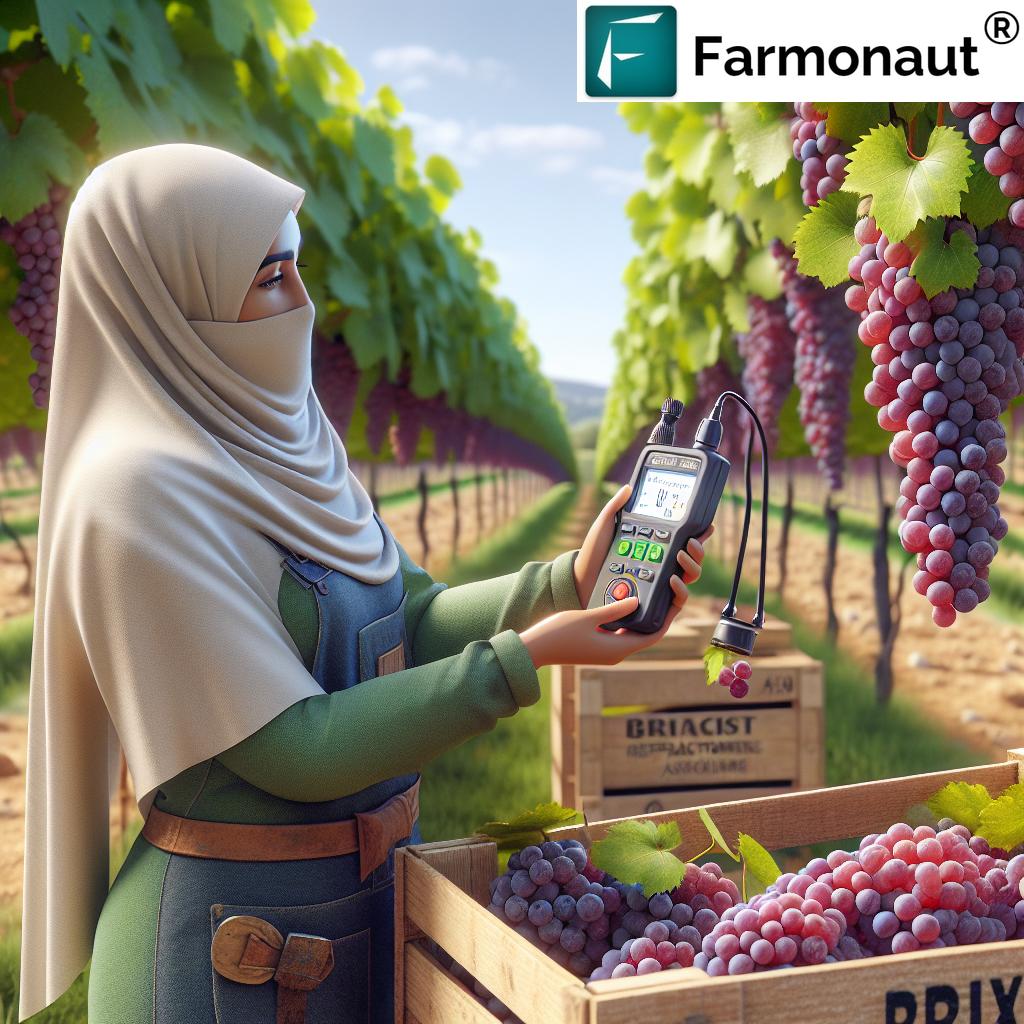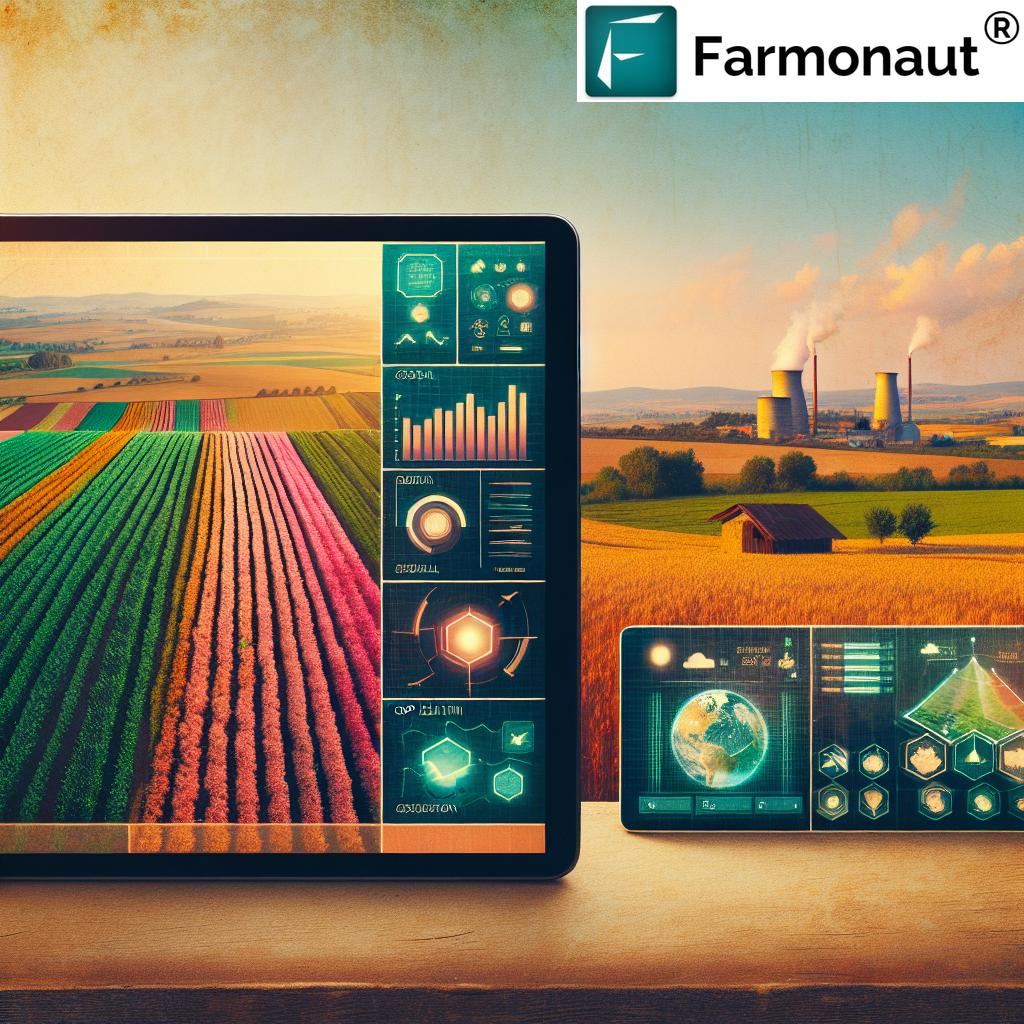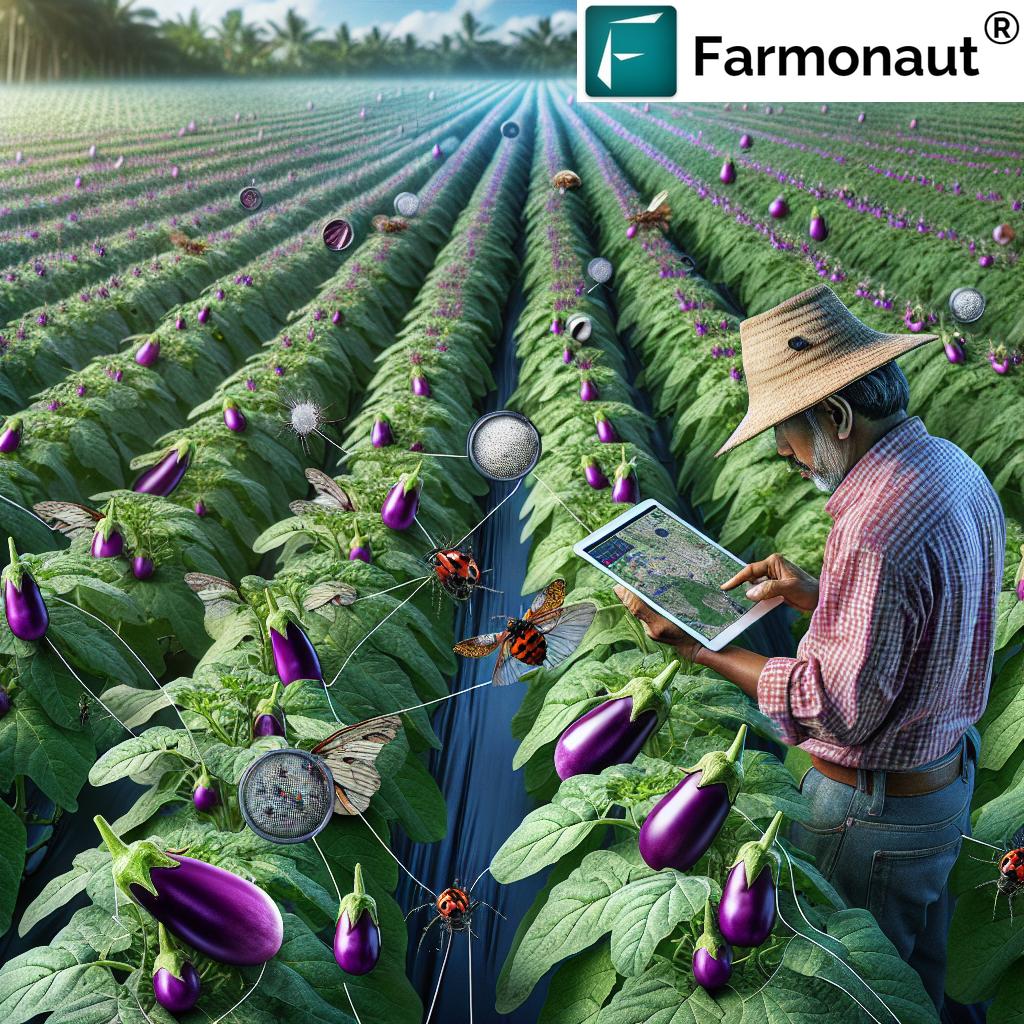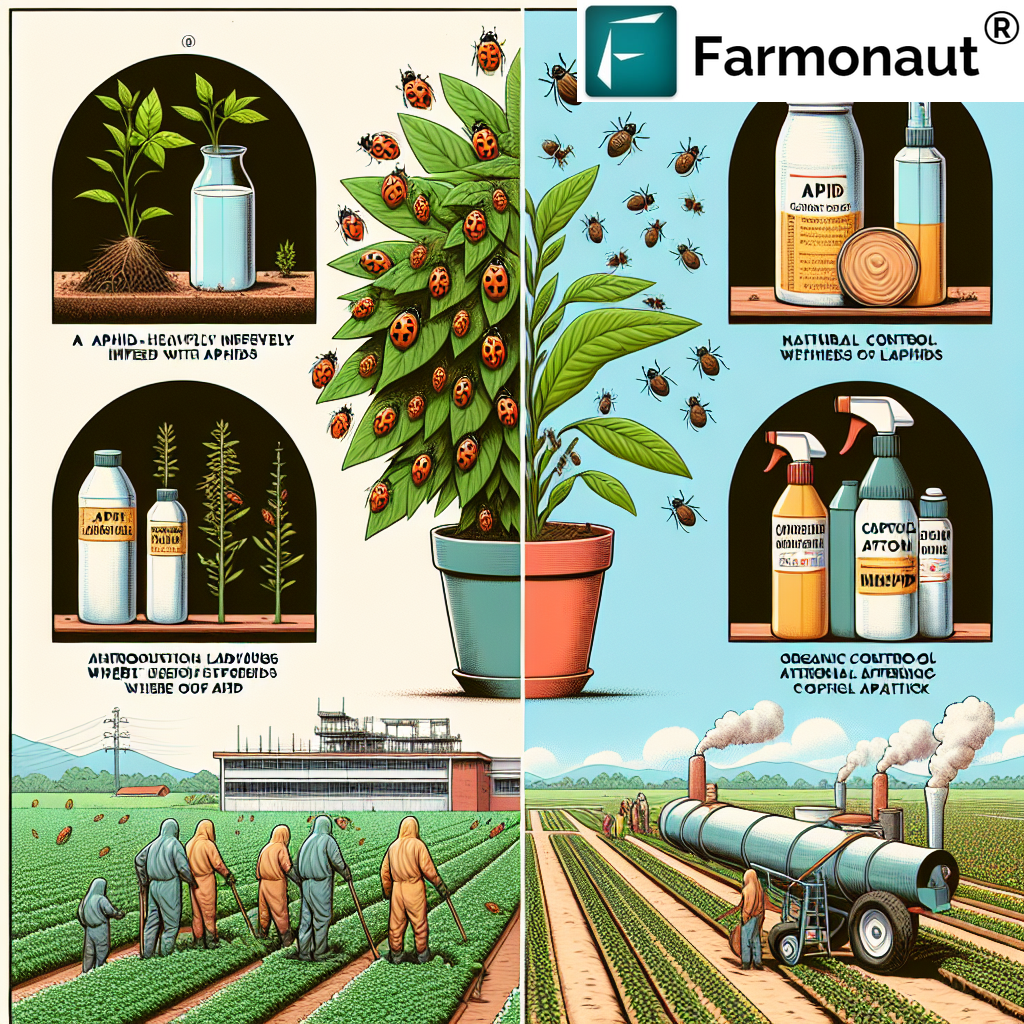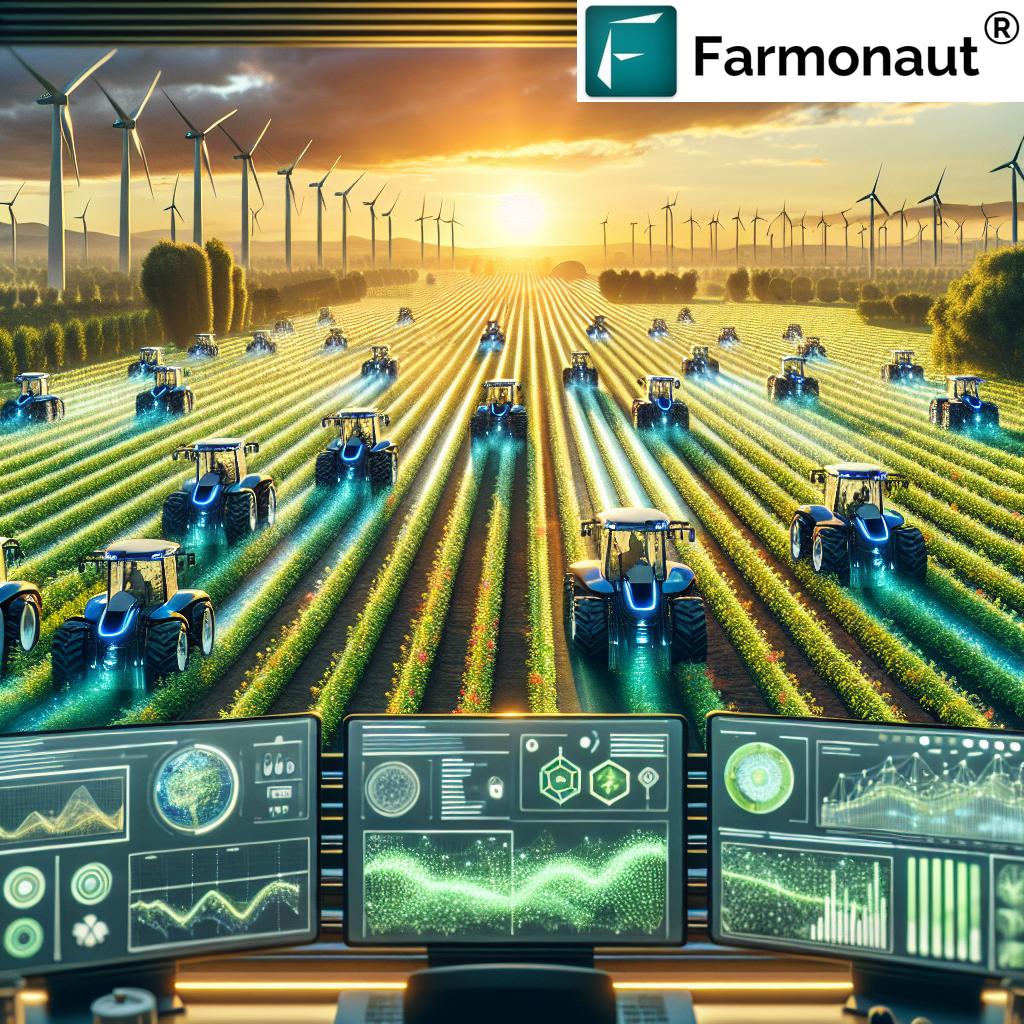Liquid Farm Fertilizer Application: 5 Proven Methods
Summary and Introduction
Liquid fertilizers have become a cornerstone of modern agriculture, offering a versatile and efficient means for delivering essential nutrients directly to crops. The various liquid fertilizer application methods, when strategically implemented, help enhance nutrient uptake in plants, promote uniform crop growth, and support sustainable farming practices.
Their application methods—from foliar spraying directly onto leaves, integrating with fertigation systems, to using starter solutions—each serve a tailored purpose in optimizing nutrient delivery and minimizing losses. However, effective use hinges on careful consideration of timing, equipment, environmental impact, and best management practices.
In this guide, we will explore the 5 proven methods of liquid fertilizer application, compare them using a detailed table, and delve into the technological innovations, like those offered by Farmonaut, that can elevate your precision and sustainability in fertilizer use.
What Are Liquid Fertilizers?
Liquid fertilizers are nutrient solutions or suspensions specially formulated to provide essential nutrients in a form readily available for rapid plant absorption. Unlike granular alternatives, these fertilizers are delivered to crops in a dissolved state, which allows for quicker correction of nutrient deficiencies, more uniform application, and increased control over rates, timing, and formulations.
With the shift towards technology-driven sustainable farming practices, liquid fertilizer application methods such as fertigation, foliar feeding, and direct soil injection have become pivotal for optimizing plant growth, minimizing losses, and reducing environmental risks. Whether you are looking to enhance crop yields, improve resource efficiency, or leverage data for better farm management, understanding the spectrum of liquid fertilizer methods is essential for any modern farmer.
Comparison Table: Liquid Fertilizer Application Methods
To help you select the best liquid fertilizer application method for your crop requirements, here’s a comprehensive comparison based on nutrient uptake efficiency, technological needs, environmental impact, and more.
| Application Method | Estimated Efficiency in Nutrient Uptake (%) | Recommended Crop Types | Main Technological Requirement | Environmental Impact | Est. Cost per Acre (USD/INR) |
|---|---|---|---|---|---|
| Foliar Application (Foliar Spraying) (Foliar Feeding Techniques) |
55-75% | Vegetables, Fruit Orchards, Field Crops | Spraying Equipment, Tractors | Medium (May lead to drift/runoff if misapplied) |
$10-25 / ₹800-2,000 |
| Fertigation (Fertigation Methods for Crops) |
80-95% | Fruit/Vegetable, Row Crops, Greenhouses | Drip/Sprinkler Irrigation System | Low | $18-40 / ₹1,500-3,500 |
| Starter Solutions (Starter Fertilizer Solutions) |
65-85% | Field Crops, Seedlings, Transplants | Seed Soaking/Root Dipping Stations | Low | $8-15 / ₹650-1,200 |
| Direct Soil Application (Direct Injection, Anhydrous Ammonia) |
65-90% | Cereals, Corn, Sugarcane | Soil Injector/Applicator, Safety Gear | Medium-High (Risk of leaching/ammonia loss) |
$23-50 / ₹1,800-4,000 |
| Advanced Integrated Methods (Sensor-guided, Site-Specific Application) |
90-98% | All Crop Types (for precision farming) | Sensors, Satellite Data, AI Platforms | Very Low | $25-60 / ₹2,000-4,800 (inc. tech use) |
The 5 Proven Liquid Fertilizer Application Methods
Below we break down each method, its specific use cases, technology requirements, benefits, and considerations in modern farming.
1. Foliar Application – Spraying Liquid Fertilizer onto Leaves
Foliar application involves spraying liquid fertilizers directly onto plant leaves, allowing rapid absorption through stomata and the epidermis. This method is particularly effective for correcting micronutrient deficiencies quickly and for delivering fast-acting remedies when soil uptake is limited due to dry conditions or leaching.
- Optimal Conditions: Preferably applied in cooler temperatures, overcast skies, or at dawn/dusk to minimize evaporation and maximize absorption.
- Ideal Use Cases: Leafy vegetables, fruit trees, cash crops, fields with localized deficiencies (zinc, manganese, iron).
- Equipment Needed: Backpack sprayers, tractor-mounted sprayers, or drone-based spraying systems.
- Advantages:
- Rapid correction of deficiencies
- Bypasses root zone issues (compacted or poor soil)
- Highly effective for targeted nutrition
- Limitations:
- Leaf burn risk if concentration is too high
- Ineffective if rainfall occurs shortly after application
- Generally supplementary—not a primary method for all macronutrient delivery
Scientific reference: ScienceDirect: Fertilizer Application Techniques
2. Fertigation – Integrating Fertilizer with Irrigation Systems
Fertigation is among the most advanced liquid fertilizer application methods in agriculture, integrating nutrient delivery with regular irrigation systems (drip, micro-sprinkler, pivot, etc.). Liquid fertilizer is dissolved or suspended and then distributed evenly throughout the irrigation network, delivering nutrients straight into the root zone.
- Key Benefits:
- Uniform distribution of nutrients throughout the field
- Precise control of nutrient dosage and timing to match crop stages
- Reduces labor and minimizes compaction since fewer field passes are required
- Significantly lowers risks of runoff and leaching compared to broadcast methods
- Optimal for: High-value crops, greenhouses, orchards, and vegetable production systems
- Technology Needs:
- Pressurized irrigation system (drip/sprinkler)
- Dosing pumps, injectors, filtration units
- Monitoring meters for flow and concentration
According to recent studies, fertigation can enhance nutrient uptake efficiency by up to 90%, resulting in lower fertilizer use, reduced costs, and better environmental stewardship.
Reference: MRB Biotechnology: Fertigation Applications
Are you managing a large-scale irrigation project?
Streamline your farm resource management using Farmonaut’s Fleet Management Tools — track and optimize the movement of irrigation, spraying, and application equipment for efficient farm operations.
3. Starter Solutions – Boosting Early Growth and Seedling Development
Starter fertilizer solutions are diluted liquid fertilizers applied at the earliest crop growth stages—either at sowing, transplanting, or seedling establishment. This method aims to promote better germination, strong root establishment, and healthy initial plant development.
- How Applied:
- Seed soaking or priming before planting
- Root dipping or seedling spraying at transplant
- In-furrow liquid injection during mechanical planting
- Great for: Cereals, maize, paddy, tomato/vegetable seedlings, horticultural transplants
- Main Advantages:
- Supplies nutrients precisely when young plants are most vulnerable
- Reduces transplant shock
- Quickly corrects micronutrient deficiencies common in seedbeds or nurseries
- Limitations:
- Usually only effective for the early life cycle stages, not for main-season nutrition
- Requires careful dilution and timing
Reference: MRB Biotechnology
4. Direct Soil Application – Injecting Fertilizers into the Soil
Direct soil application involves the placement of liquid fertilizers directly into the root zone using injection tools, especially for nutrients like nitrogen (anhydrous ammonia). This technique is often preferred for row crops like maize, sugarcane, and cereals, where uniform banding and deeper placement are needed.
- How Does It Work? Fertilizer is injected 10-20 cm below the soil surface using specialized applicators, placing nutrients close to the roots and minimizing surface losses.
- Best For: Nitrogen fertilization—delivers maximum efficiency for large-acre crops and reduces volatilization.
- Risks and Considerations:
- Strict safety protocols and personal protection required when handling concentrated solutions or gases (like ammonia).
- Improper injection depth can still lead to nutrient loss and environmental pollution.
- Higher up-front equipment and maintenance costs.
- Environmental Note: With advanced soil sensors, you can now track soil health impact post-application.
Farmonaut’s Carbon Footprinting tools help you measure and manage environmental impact, supporting sustainable farming practices.
Reference: MRB Biotechnology
5. Advanced Integrated Application Methods – Precision & Sustainability
With precision agriculture platforms—like those powered by satellite data, artificial intelligence, and field sensors—modern farms can take liquid fertilizer application to the next level.
These advanced integrated methods include site-specific nutrient application, real-time crop health monitoring, and AI-driven recommendations, optimizing both the rate and timing for every field segment.
- Benefits:
- Reduces over-application and environmental pollution
- Enables variable-rate technology (VRT), applying tailored formulations based on actual crop nutrient requirements
- Integrated with blockchain for traceability and compliance
- Technology: Requires EOS data (satellite imagery), in-field monitoring devices, AI-advisory tools, and sometimes drone or autonomous application machinery.
-
Discover how Farmonaut’s Traceability Solutions can help you document sustainable fertilizer practices from field to market, boosting consumer trust.
Benefits of Liquid Fertilizers in Modern Agriculture
Why choose liquid fertilizers? With shifting soil conditions, extreme weather, and the growing demand for sustainable farming practices, they offer:
- Rapid Nutrient Availability: Delivered in a ready-to-absorb state, they facilitate instant uptake and quicker remedies for deficiencies.
- Uniform Application: Suitable for large-scale and precision farming, ensuring consistent distribution even on uneven terrains.
- Customizable and Tailored Formulations: Easily adapted to specific requirements for crop, soil, and growth stage.
- Boosts Root Health: Direct root zone application can notably enhance root development and plant health.
- Reduces Soil Compaction: Easier application typically requires fewer passes over the field, helping to maintain ideal soil structure.
- Supports Efficient Nutrient Delivery in Agriculture: Lower storage and labor costs, as well as more predictable results season to season.
Best Practices for Liquid Fertilizer Application
Best practices maximize fertilizer efficacy while safeguarding your soil, crops, and the environment. Here are the most critical recommendations:
-
Timing & Conditions:
- Apply when soils are moist, weather is moderate, and risks of heavy rainfall are low (Read more).
- Early morning or evening reduces evaporation risk; do not spray in strong sunlight.
-
Application Rates:
- Adjust based on regular soil testing, field trials, and crop requirements.
- Avoid over-application, which may lead to nutrient imbalances, root burn, or pollution.
-
Equipment Calibration:
- Regularly calibrate sprayers or injectors for uniform distribution and to maintain recommended rates.
-
Environmental Considerations:
- Plan applications to reduce nutrient runoff and leaching; never fertilize before anticipated heavy rain.
- Integrate with precision agriculture tools for field-specific recommendations.
-
Storage & Handling:
- Store liquid fertilizers in sealed, temperature-controlled containers away from direct sunlight.
- Check expiry dates, especially for fertilizers containing organic or microbial ingredients.
Reducing Nutrient Runoff – How Farmonaut Can Help
Reducing nutrient runoff is key to both yield optimization and environmental stewardship.
Farmonaut’s Crop Plantation & Forest Advisory
platform harnesses satellite-based, real-time field data and AI, guiding field-specific application rates and timing—helping farmers minimize losses and maximize efficiency.
Disadvantages and Key Considerations
While the benefits of liquid fertilizers are significant, there are important considerations and potential downsides to weigh:
-
Require More Frequent Applications:
Since liquid fertilizers may readily wash away with rain or frequent irrigation, they often require more frequent applications than granular formulations. This could increase labor and management costs. -
Potential for Over-Fertilization:
Easy mixing and rapid uptake mean over-application can quickly harm plant roots or contribute to environmental issues like pollution (see BestLiquidFertilizer.com). -
Environmental Risks:
Improper timing or poor management can lead to nutrient runoff, leaching, or contamination of local water sources. This makes precision tools critical in modern agriculture. -
Storage and Stability:
Shorter shelf life, risk of spoilage (especially with organic materials/microbial inoculants), and storage requirements need to be managed to maintain fertilizer efficacy.
Leveraging Technology for Precision Fertilizer Application
Innovative farm management is essential for cost-effective, sustainable fertilizer use. Harnessing the power of:
- AI-driven advisory systems to recommend optimal application timing, rates, and corrective actions (reducing losses and improving nutrient uptake in plants)
- Satellite-based monitoring platforms (like NDVI, LAI, and multispectral imaging) to detect real-time field variability, ensuring uniform fertilizer distribution and spotting areas with limited uptake
- Blockchain traceability tools to document every stage in the fertilizer journey for compliance and transparency
- Precision field resource management to limit environmental risks, reduce compaction, and increase operational efficiency
Developers and Agritech Companies: Integrate advanced satellite and weather data with Farmonaut’s robust API or visit the Developer Docs to build your custom agritech solutions for efficient nutrient delivery in agriculture.
Farmonaut: Advanced Technologies for Sustainable Farming Practices
At Farmonaut, our mission is to make precision agriculture affordable and accessible worldwide. We help farmers, agribusinesses, and governments integrate technology and data-driven insights into their fertilizer management through:
- Satellite-Based Crop Health Monitoring: Real-time NDVI, soil moisture, and stress analytics.
- Jeevn AI Advisory System: Personalizes application timing and nutrient dosage recommendations, reducing input costs and maximizing yields.
- Blockchain-Based Product Traceability: Full visibility from field to consumer, documenting sustainable farming practices.
Learn more about Farmonaut’s Traceability - Carbon Footprinting: Monitor and lower the environmental impact of all farm operations—including fertilizer use.
Explore Carbon Footprinting Tools - Resource & Fleet Management Tools: Efficient planning and tracking of machinery for application, irrigation, and crop care (see how).
- Large-Scale Farm Management: Ideal for cooperatives/governments overseeing fertilizer logistics and compliance at scale: Agro Admin/Large Scale Farm Management
- Crop Loan & Insurance: Secure data-driven verification for compliant, sustainable input use: learn more
Farmonaut’s platform is available via:
Farmonaut Subscriptions and Contact
Access Farmonaut’s subscription-based packages—tailored for every farmer, agribusiness, and government agency. Affordable, scalable, and easy to deploy—choose the right level of satellite frequency, advisory depth, and reporting for your unique operation.
FAQ – Frequently Asked Questions
What are the main advantages of liquid fertilizer over granular fertilizers?
Liquids are more readily available for root or foliar uptake, offer uniform application, customizable mixes, and immediate response for correcting deficiencies. They’re also ideal for fertigation and precision agriculture.
How often should liquid fertilizers be applied?
Frequency depends on crop requirements, soil type, rainfall, and fertilizer formulation. Many systems benefit from more frequent, lower dose applications to avoid leaching and maintain optimal conditions.
Can liquid fertilizers be used on all crops?
Yes, most field, horticultural, and specialty crops respond well when the right formulation and application method are used. Always check compatibility and crop recommendations before use.
Is fertigation suitable for organic farming?
Yes—many certified organic liquid fertilizers and biostimulants are compatible with modern fertigation systems. Choose products and rates approved for organic farming.
How can technology help minimize fertilizer-related environmental risks?
Satellite, AI, and blockchain tools ensure tailored, precise, and traceable nutrient application. These systems reduce waste, prevent runoff, and guarantee compliance for sustainable farming practices.
Conclusion: Final Thoughts
Liquid fertilizer application methods are redefining modern agriculture, offering versatility, precision, and sustainability unmatched by traditional alternatives. By choosing the appropriate method—from foliar feeding techniques to advanced fertigation methods for crops—and integrating best practices for liquid fertilizers, today’s farmers can enhance nutrient uptake in plants, boost yields, and promote sustainable farming practices for the next generation.
As technology becomes increasingly central to agriculture, leveraging platforms like Farmonaut equips producers with satellite, AI, and blockchain-backed tools for smart decision-making, transparent supply chains, and responsible stewardship of our natural resources. Efficient nutrient delivery in agriculture is no longer just an option—it’s the cornerstone of profitability, food security, and environmental harmony.
Ready to enhance your farm’s sustainability and productivity?
Try Farmonaut’s advanced tools for crop health, resource management, and fertilizer efficiency.


